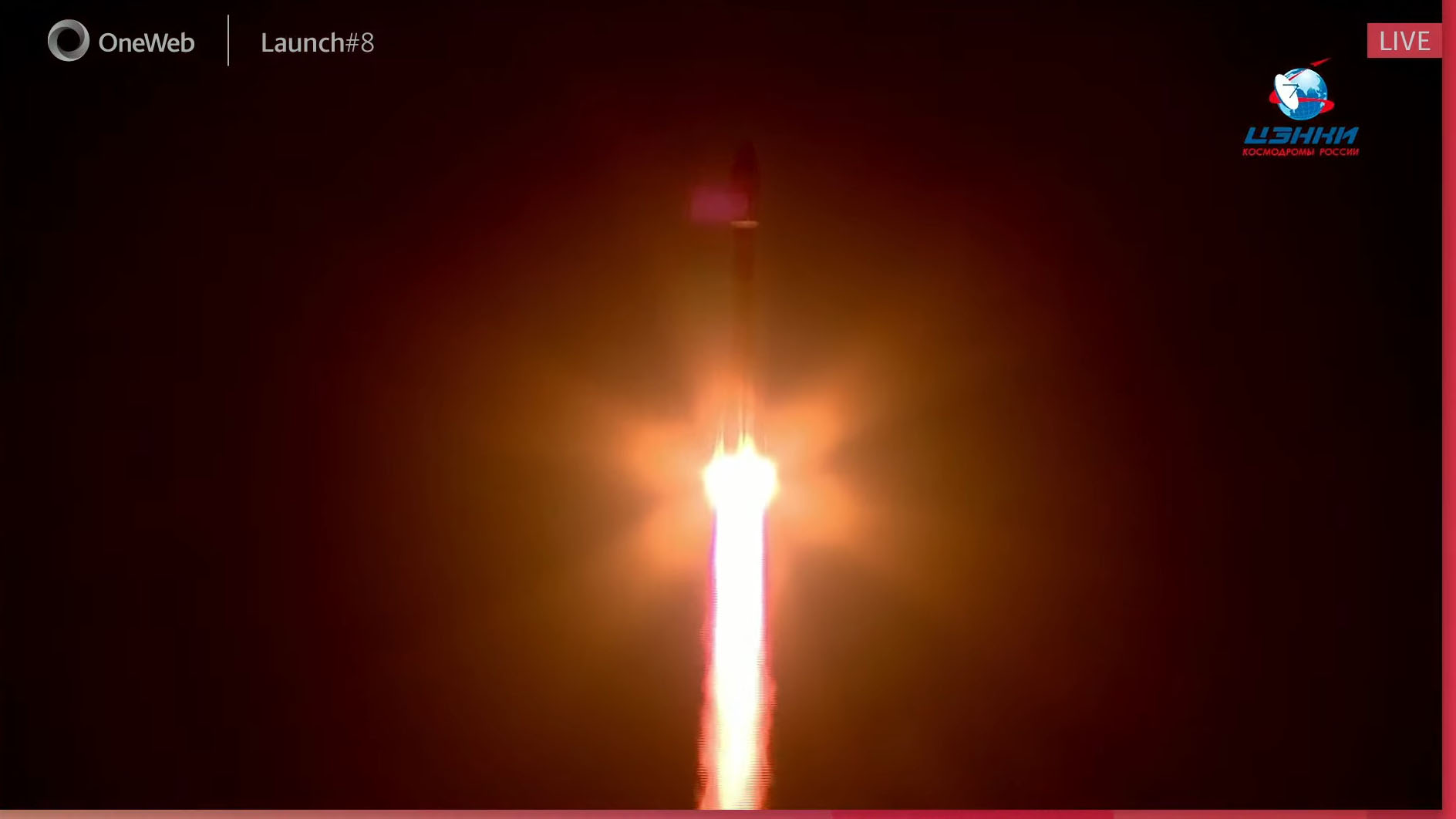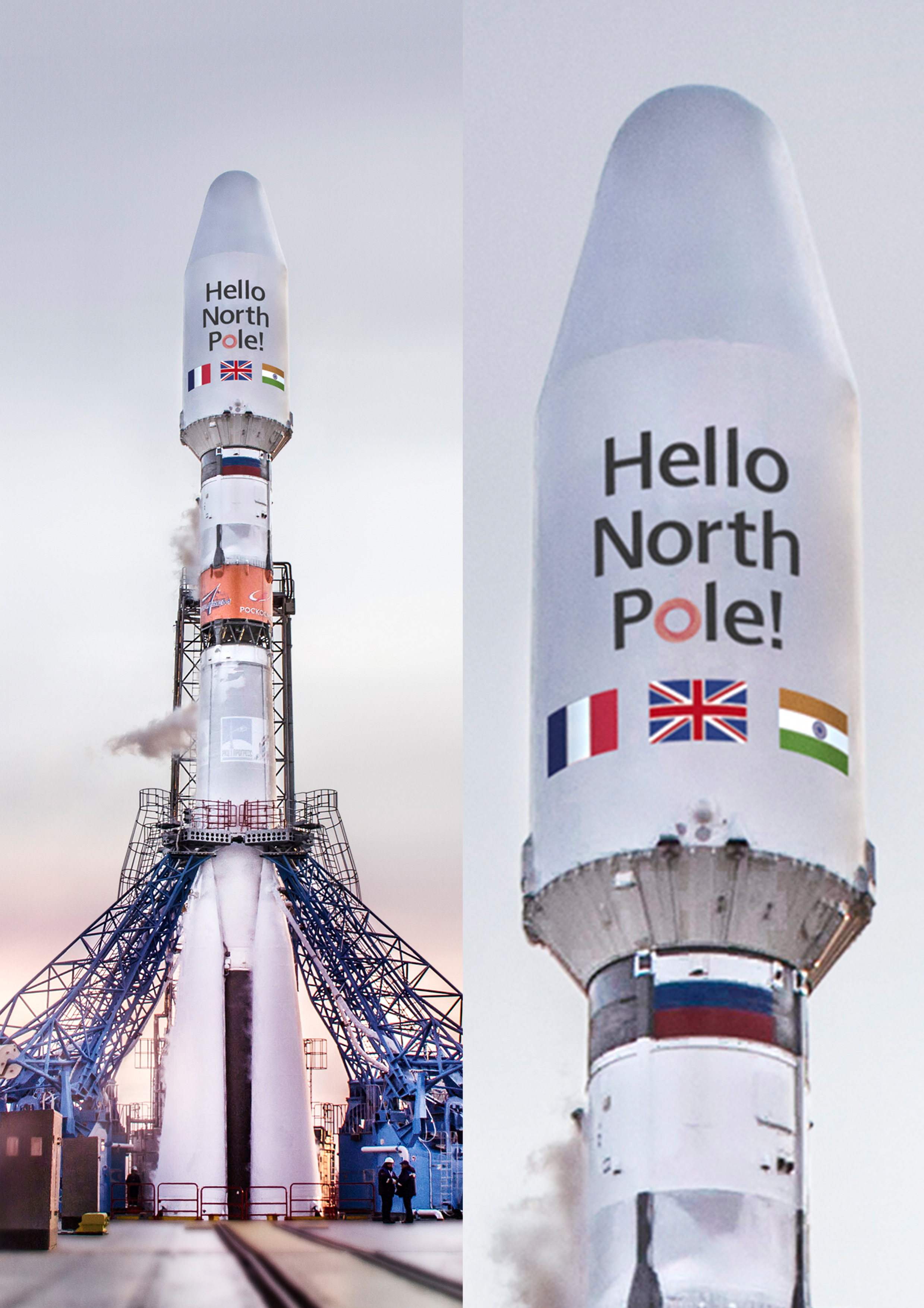Arianespace Soyuz rocket lofts 36 new OneWeb internet satellites
The launch means OneWeb will be able to begin providing internet coverage to far-northern latitudes
Arianespace lofted another 36 OneWeb broadband satellites today (July 1) in a milestone that will allow the company to begin providing internet access.
The European launch provider used a Soyuz rocket to loft the satellites into orbit from the Vostochny Cosmodrome in Siberia, at 8:48 a.m. EDT (1248 GMT). Today's mission, called OneWeb 8, was the eighth OneWeb launch since the first satellites went up in 2019, and will bring the total number of satellites in OneWeb's blooming internet constellation up to 254.
"There we have it, we have liftoff of OneWeb launch 8," launch commentator Georgie Barrat said at blast-off. "Look at it go in that fantastic setting — it's almost looking glowing red out there, isn't it!"
In order to deliver the satellites into the proper orbits, the mission's Fregat upper stage will begin deployment more than an hour after launch. The Fregat will deploy satellites in nine groups of four during a process that will take nearly three hours to unfold. From there, the deployed satellites will need to raise their own orbits to reach operational altitudes.
In photos: OneWeb launches new global satellite internet constellation

The London-based communications company aims to launch a total of 648 OneWeb satellites to provide high-speed internet connectivity to customers around the world, with services beginning over limited regions by the end of 2021. (For comparison, SpaceX's Starlink internet constellation is expected to have at least 12,000 satellites.)
When the satellites from today's launch begin operating, the company will be able to begin rolling out services in parts of the Northern Hemisphere.
Breaking space news, the latest updates on rocket launches, skywatching events and more!

"This launch will mark the completion of OneWeb's 'Five to 50' ambition to bring into orbit the satellites required to enable connectivity services to the 50th parallel and above by year's end, which includes Canada, U.K., Northern Europe, Alaska and Arctic regions," Arianespace officials said in a mission description.
OneWeb is targeting 2022 to begin global coverage, according to broadcast commentators.
OneWeb kicked off its "Five to 50" campaign in December 2020 after the company emerged from Chapter 11 bankruptcy; it refers to the five launches needed to launch all the satellites it would need to provide services north of the 50th parallel.
"To mark the fifth and final launch of 'Five to 50,' with all satellites delivered on time, a welcome message 'Hello North Pole' is branded on the rocket, reflecting the significant progress OneWeb has made to secure its Arctic coverage," OneWeb officials said in a statement.

The Soyuz rocket will send the OneWeb satellites into a near-polar orbit, passing near but not directly over Earth's north and south poles. The satellites will deploy from the rocket at an altitude of about 280 miles (450 kilometers) and, over the coming months, will fire thrusters to slowly reach an operational altitude of about 750 miles (1,200 km).
Satellites will deploy in batches of four, with the first batch separating from the rocket's Fregat upper stage one hour and 18 minutes after liftoff. With about 19 minutes between deployments, the final OneWeb satellites will separate nearly four hours after liftoff.
After today's mission, Arianespace has 11 more OneWeb missions with hundreds of satellites to launch under its contract with OneWeb. The next launch, OneWeb 9, is currently scheduled to lift off Aug. 2 from the Baikonur Cosmodrome in Kazakhstan, followed by OneWeb 10 on Aug. 26, also from Baikonur.
Email Hanneke Weitering at hweitering@space.com or follow her @hannekescience. Follow us on Twitter @Spacedotcom and on Facebook.
Join our Space Forums to keep talking space on the latest missions, night sky and more! And if you have a news tip, correction or comment, let us know at: community@space.com.

Hanneke Weitering is a multimedia journalist in the Pacific Northwest reporting on the future of aviation at FutureFlight.aero and Aviation International News and was previously the Editor for Spaceflight and Astronomy news here at Space.com. As an editor with over 10 years of experience in science journalism she has previously written for Scholastic Classroom Magazines, MedPage Today and The Joint Institute for Computational Sciences at Oak Ridge National Laboratory. After studying physics at the University of Tennessee in her hometown of Knoxville, she earned her graduate degree in Science, Health and Environmental Reporting (SHERP) from New York University. Hanneke joined the Space.com team in 2016 as a staff writer and producer, covering topics including spaceflight and astronomy. She currently lives in Seattle, home of the Space Needle, with her cat and two snakes. In her spare time, Hanneke enjoys exploring the Rocky Mountains, basking in nature and looking for dark skies to gaze at the cosmos.
